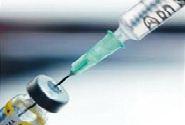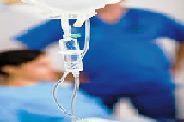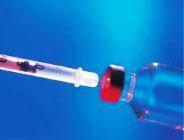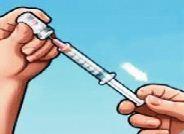Rationale Use of Injections
Rationale Use of Injections
Injection
An injection is only a medium to administer a drug / medicine into the body for prophylactic and or curative purposes.
Safe Injection
- A safe injection is an injection that
- Does no harm to the recipient (e.g. no abscess formation),
- Does not expose the health worker to any risk (e.g.: needle stick injuries) and
- Does no harm to the community (e.g.: unsafe disposal of waste)
Unsafe Injection
- Unsafe injection is any such practice which cause harm to patients, providers or the community.
Unsafe injection practices include
Reuse
 Using the same syringe or needle to administer medication to more than one patient.
Using the same syringe or needle to administer medication to more than one patient.- Using cannula’s with a needle that has already been used for a patient
Unhygienic practices
 Not washing hands, not wearing gloves by provider
Not washing hands, not wearing gloves by provider- Not cleaning the injection sites
- Touching the needles with hands or with any objects before and after injections
- Flushing the syringes or needles before injections
- Administering injections over clothes
- Leaving the needles in a multi dose vial.
Wrong techniques
 Wrong selection of injection sites
Wrong selection of injection sites- Using medications without checking labels or expiry dates
- Using medicines packed as single-dose or single-use for more than once
- Recapping the syringes after injections.
Waste management mechanism
 Not segregating the injection related waste at source
Not segregating the injection related waste at source- Not cutting hub (needles and plungers) after every injections
- No sharp containers for needle storage
- No adequate storage sites
- No terminal disposal mechanism
Procedures associated with unsafe injection practices
Unsafe injection practices that put patients at risk for HBV, HCV and other infections have been identified during various medical procedures. Examples include
- Administration of sedatives and anesthetics for surgical, diagnostic, and pain management procedures
- Administration of IV medications for chemotherapy, cosmetic procedures, and alternative medicine therapies
- Administration of vaccines through IM and SC routes
- Use of saline solutions through IV lines and catheters
- Administration of SC injections for insulin and insulin like drugs, growth hormones or for any other indication either by health care provider or self-administration
- Tattooing procedures, where skin puncture is necessary
Outcome of Unsafe Injection Practices
Outcomes of unsafe injections could be grouped as:
- Short term - Abscess formation, skin rashes, irritation, pain, disabilities
- Long term - HBV, HCV and HIV infections.
Unsafe injection practices are a powerful means to transmit blood borne pathogens, including HBV, HCV and HIV. Because infection with these viruses initially presents no symptoms, the infections remain as a silent epidemic. However, the consequences of this silent epidemic are increasingly recognized. While HIV has been well recognized for more than three decades as a pandemic; WHO has recently raised an alert to be watchful of the silent transmission of hepatitis group of viruses as the morbidity and mortality burden due to direct and indirect causes of hepatitis transmission is rising alarmingly. Few studies from less developed countries quote association of water for injections and viral hepatitis, demanding a close monitoring of quality of vials and fluids. Incidence of particles in the vials and fluids were reported from India also.
Hepatitis B virus (HBV)
- HBV is highly infectious: unsafe injections account for 33% of new HBV infections in developing and transitional countries for a total of 21.7 million people infected each year.
Hepatitis C vims (HCV)
- Unsafe injections are the most common cause of HCV infection in developing and transitional countries, causing two million new infections each year, accounting for 42% of cases.
Human immunodeficiency virus (HIV)
- Globally nearly 2% of all new HIV infections are caused by unsafe injections with a total of 96,000 people infected annually. In South Asia, up to 9% of new cases are attributed to unsafe injections. Such proportions can no longer be ignored.
Injection Safety
Injection safety, or safe injection practices, is a set of measures taken to perform injections in an optimally safe manner for patients, healthcare workers, bio medical waste handlers, professionals involved in handling waste outside the health facilities, rag pickers and general community. Injection safety includes practices intended to prevent transmission of infectious diseases between one patient and another, or between a patient and healthcare provider, and also to prevent harms such as needle stick injuries.
To ensure injection Safety, the following Five "A"s are recommended while considering Injections:-
- Appropriate indication
- Appropriate molecule/drug
- Appropriate patient
- Appropriate patient information
- Appropriate evaluation
Aseptic Technique for injections
- Aseptic technique refers to the manner of handling, preparing, and storing of medications and injection equipment/supplies (e.g., syringes, needles and IV tubing) so as to prevent microbial contamination.
Best Injection Practices
- The WHO strategy for the safe and appropriate use of injections worldwide has following objectives
- Formulating national policies and plans for the safe and appropriate use of injections,
- Ensuring quality and safety of injection equipment,
- Facilitating equitable access to injection equipment
- Achieving appropriate, rational and cost effective use of injections
- Constitute regional specific waste management solutions
The best practices for safe injections include
- Use sterile injection equipment preferably auto destructible one time use.
- Prevent contamination of injection equipment and medication
- Prevent Needle Stick Injuries (NSIs) to the provider
- Prevent access to used syringes and needles -Intentional and Downstream reuse
Other practice issues include-
- Use of Safety Engineered Medical Devices (SEMDs)-Reuse
- Prevention (RUP) syringes, safety syringes and safety needles
- Maintaining Hand Hygiene all the times
- Ensuring skin integrity of the provider
- Using gloves, if indicated
- Swabbing vial tops or ampoules
- Adequate site preparation of patient
Last Modified : 2/21/2020
Provides information about Patient safety.
